|
Too cold? Too warm? Humans can be sensitive to temperature fluctuation. Now Porsche’s automatic climate control system in the latest generation of Porsche 911 intelligently ensures a sense of comfort. Porsche engineers have intelligently refined it once again for the latest generation of Porsche 911 Cabriolets. The challenge: while the interior temperature sensor is a central control variable in a closed vehicle, many additional influences are added when driving in the open air. This is why the new cabriolet control system slowly suppresses this sensor as the soft-top is opened. The complex automatic climate control system now processes around 350 signals in half-second intervals in coordination with twenty external and twenty internal interfaces. Sensors continuously record parameters, such as outlet, outside, and coolant temperatures as well as engine speed, insolation, and vehicle speed. The interfaces relevant to the climate control unit include the control units for the engine, soft-top, doors, and seats. The climate control system uses this data stream to continuously calculate the optimum air temperature, air outlet volume, and air distribution in the open-top interior. This clever convertible control is particularly noticeable at low speeds. Even in the searing summer heat of the city, 911 Cabriolet drivers are surrounded by a pleasant freshness. During top-down excursions in the winter, the Porsche system overrides the conventional comfort formula of “warm feet, cool head.” Instead, the automatic climate control system distributes more warm air via the center air vents for the driver and front passenger. The result: occupants enjoy a cozy veil of heat without having the unpleasant sensation of air being blown in their faces. Blissfully warm hands on the steering wheel; heavy winter jackets head for the luggage compartment. In changing weather conditions, common in spring or fall, the automatic climate control reacts to practically every cloud in the sky with a control adjustment. And it does all of this without any manual intervention. What’s left for the occupants to do? Just to remember their sunscreen and sunglasses and, if it rains, to close the top—and enjoy the drive.
The Porsche Exclusive Manufaktur shapes up the 911 with two aerodynamic and styling packages. The latest generation Porsche 911 is now available with a SportDesign package, which provides a revised front apron with a spoiler lip in distinctive design. The rear has also been reconfigured, with a new bumper section that has raised the number plate to incorporate a new air intake and outtake. The SportDesign package can be combined with optionally available SportDesign side skirts, which have the optical effect of lowering the car still closer to the road. Also available as a further option is the new Aerokit, which is offered on all Coupé versions of the 992 series. Based on the SportDesign package the Aerokit comes with a range of aerodynamic enhancements: a distinctive front spoiler, a fixed rear spoiler and fixed rear wing, reminding you of Porsche’s GT vehicles. A combination with the SportDesign side skirts enhances the ground hugging stance and further underlines the 911’s racing DNA. The new Aerokit has been engineered at Porsche’s development centre in Weissach where experts spent months optimizing the design and function. Prototypes were carefully honed in Porsche’s wind tunnel to ensure that the Aerokit fully delivers on its striking visual promise of reducing the uplift forces over both front and rear axle. The intensive development phase also included hot and cold climate testing around the world. More than 90,000 on road endurance kilometres were covered, while the Aerokit was also fine-tuned on the race track in Nardo with a total of 55,000 km of high speed testing.
The Aerokit and SportDesign package are both available in exterior colour or partially in black high-gloss and can be ordered now. By visiting www.porsche.com/exclusive-manufaktur you can discover everything you need to know about how extraordinary a Porsche can be configured with the broad product portfolio from the Porsche Exclusive Manufaktur.
Ice, snow, curves – and a whole lot of adrenaline. One thing is for sure, the Porsche Ice Experience Suisse in St. Moritz is one of the most beautiful and exhilarating ways of venturing out on snow and ice.
The new sports car is being launched as a Coupé and Cabriolet, and generates 283 kW (385 PS; Fuel consumption combined 9.0-9.2 l/100 km; CO2 emissions combined 206-210 g/km) from its 3.0-litre, six-cylinder boxer engine with biturbo charging. The Carrera is the entry-level 911 model and offers 11 kW (15 PS) more power output than its predecessor did. It shares its premium-quality standard features virtually unchanged from the 911 Carrera S. These include the high-quality interior with 10.9-inch touchscreen display, comprehensive connectivity and also innovative assistance systems like the Porsche Wet Mode that ensures even safer handling on wet roads. The 911 Carrera is distinguished by smaller dimensioned wheels and brakes and the individual tailpipe covers on the exhaust system.
Exclusive sportiness – the new Carrera model As with the Carrera S model, the engine, chassis and brakes are designed for exclusive sportiness. The 3.0-litre, six-cylinder boxer engine of the 911 Carrera generates power largely through the smaller wheel diameters of the turbines and compressors that feature in the new turbochargers. Power transmission is handled by the new eight-speed dual-clutch transmission (PDK).This enables the 911 Carrera Coupé to accelerate from 0-100 km/h in 4.2 seconds, with a top speed of 293 km/h. The optional Sport Chrono Package shaves a further 0.2 seconds off the sprint. The combined fuel consumption (NEDC-correlated) of the Coupé is 9.0 l/100 km, while the Cabriolet records this figure as 9.2 l/100 km. The driving dynamics set-up includes 235/40 ZR tyres on 19-inch alloy wheels on the front axle. The mixed tyre configuration features 20-inch wheels with 295/35 ZR tyres at the rear. Stopping power is provided on both axles by 330-millimetre brake discs with black, four-piston monobloc fixed callipers. A dream car in your own living room: With the “Porsche Augmented Reality Visualizer App”, customers can now create a photorealistic representation of their configured vehicle in the real world. This makes Porsche the only manufacturer to give their customers the ability to examine their dream sports car and all its technical details in three dimensions. The vehicle can be configured in the familiar Web Configurator or using a 3D model in the app. Users can virtually place the configured vehicle on any surface – both inside rooms as well as outdoors. "With our new app, the configuration of a Porsche will be even more of a digital experience," says Oliver Hoffmann, Director Marketing Communications at Porsche. "Now, before making the purchase decision, everyone can virtually park their dream Porsche in their own driveway, marvel at it in their own living room, or show a photo-realistic version to their friends." So far the app includes three models: alongside the new Porsche 911 Carrera S and Carrera 4S, the concept study Mission E is also available. In autumn of this year, this will be replaced by the Taycan series model, the first fully electric Porsche. The entire product range is expected to be integrated into the application by the end of 2019. Using the Porsche Code, customers can upload their configuration from the Web Configurator into the app, and look at the vehicle and all its details in the real world – regardless of where they are. Further changes to the configuration, such as the paint colour, can be made in the Augmented Reality Visualization. The app features a “highlight function” that allows customers to view technical details that are usually hidden from view. Customers can look under the chassis of the new Porsche 911, for example, and virtually experience the vehicle’s powertrain. The app is based on the design concept and technology of existing systems; workflows already used for vehicle configuration have been adopted, enhanced and optimised. The vehicles are visible in Augmented Reality on a smartphone, in the same quality as in the classic Web Configurator on a computer. The app is now available in the App Store and in the Google Play Store and is compatible with all Augmented Reality-enabled iOS and Android end devices.
Customers score sales experience with Porsche higher than any other brand
Atlanta, Georgia. New car customers rated Porsche as the top brand in J.D. Power’s annual Sales Satisfaction Index (SSI) Study released today. Porsche improved its overall ranking by three spots in 2018 compared to last year’s SSI Study. With an increase of 10 points to a total of 828, Porsche ranked higher than any other brand. “This achievement is the result of a customer-focused strategy that has been superbly executed by our 190 U.S. dealer partners,” said Klaus Zellmer, President and CEO of Atlanta-based Porsche Cars North America, Inc. “First and foremost, this award is for our dedicated dealers, who have invested significant time in training for their employees and committed $500 million to improving facilities in just the last five years.” The SSI Study provides an analysis of the purchase experience from a customer perspective. It is based on responses from 25,748 people who purchased or leased new vehicles this year. Particular high points for customers who bought or leased a Porsche between April and May 2018 included the delivery process, dealership facilities, and working out the details of the transaction. Porsche shoppers also expressed satisfaction with salespeople and inventory. Zellmer noted that in the first 10 months of this year, Porsche sales in the U.S. were up 3.2 percent compared to the same period in 2017. “We are glad to see growth going hand-in-hand with continually improving the customer experience,” he said. Los Angeles. Faster, Porsche presented the 8th generation of the 911 in Petree Hall at the Los Angeles Auto Show. “California is the ideal place to introduce the new 911. California has been like a second home to Porsche for decades,” comments Oliver Blume, CEO of Porsche AG. “The 8th generation of the 911 is even more powerful, even more emotional, and even more efficient than its predecessor – and also offers extensive digital features. And in spite of all the innovations, the 911 is still just what it has always been: a pure sports car and the pulsing heart of Porsche: our icon.”
Unmistakably committed to the Porsche design DNA, sporting a much more muscular look and an interior featuring a 10.9-inch touchscreen monitor, the new 911 is timeless – and also modern. Intelligent control and chassis elements as well as innovative assistance systems combine the masterfully uncompromising driving dynamics for which the classic rear-engine sports car is famous, with the demands of the digital world. The next generation of twin-turbocharged flat-six engines has been further developed and is more powerful than ever before, offering 443 hp in the S models. The efficiency of the powertrain has been optimized by an improved injection process as well as a new layout for the turbochargers and charge air cooling system. The engine is mated to a new eight-speed PDK (Porsche Doppelkupplung) dual-clutch transmission. A manual transmission will be available at a later date. The top track speeds are now 191 mph (Carrera S) and 190 mph for the Carrera 4S all-wheel-drive version. Additional highlights include the standard Porsche Wet Mode, an innovative world first designed to make driving on wet roads even safer, optional Night Vision Assist with a thermal imaging camera, as well as comprehensive connectivity that uses swarm data when Porsche Connect Plus is activated. Detlev von Platen, Member of the Executive Board for Sales and Marketing at Porsche AG, emphasized the importance of the North American market for the sports car manufacturer: “U.S. customers purchased more than 55,000 Porsches in 2017, and the American importer and distributor Porsche Cars North America is on track to achieve a new record figure in 2018. Ultimately, no model better symbolizes the American love affair with Porsche than the 911. One in three Porsche 911s built in Zuffenhausen goes to the USA.” An exterior design that draws on earlier generations of the 911 The exterior design is familiar and yet unmistakably new. The eighth-generation 911 is wider, more assertive, and more advanced. Wider fenders arch over the large 20-inch wheels at the front and 21-inch wheels at the rear. All models now feature the wider body previously reserved for 911 Carrera 4, GTS and GT3 models, which is 1.7 inches (44 mm) wider at the rear fenders. The front end of all models – now 1.8 inches (45 mm) wider – revives a traditional feature of earlier 911 generations: a front luggage compartment lid with a distinctive recess in front of the windshield. Both elements visually lengthen the front of the vehicle and give it a particularly dynamic appearance. At the same time, the newly developed LED headlights illustrate how technology has advanced in the 911. These headlights are integrated into the fenders almost seamlessly, and feature the round and upright shape characteristic of classic 911 models. Flush integration of the door handles that extend when needed emphasize the tapered and smooth side contour. The exterior mirrors have also been redesigned and are optimized to reduce wind noise. The rear of the new 911 is dominated by the significantly wider, variable-position spoiler and the seamless, elegant light bar. The vertically arranged louvers of the rear decklid grille above the air intake echo the contours of the rear window. As a distinguishing feature, the rear-wheel-drive Carrera S models have black louvers, while the all-wheel-drive Carrera 4S models have silver elements. The centrally located third brake light has also been integrated into the rear decklid grille. Since this is obscured when the rear spoiler is extended, there is a second brake light mounted in the spoiler itself. With the exception of the front and rear fasciae, the entire outer skin of the car is now made of aluminum. Redesigned interior with clear lines The interior is distinctive, with clear, straight lines and recessed instruments defining the dashboard. The 911 models from the 1970s provided the inspiration here as well. As in the original 911, the new dashboard covers the entire width between two horizontal levels. Alongside the centrally positioned tachometer, two thin, frameless freeform displays provide information to the driver. Below the new Porsche Communication Management (PCM) system, a control panel of five buttons with the look of classic toggle switches creates the transition to the center console controls. The seats have also been fundamentally modified. The adapted geometry offers significantly better lateral support in the shoulder areas. Although the seat is now positioned five millimeters lower than in the previous model and has a minimally thinner seat cushion, seating comfort has been improved overall. In the area of digitalization, the 911 takes the next step into the future with further improved connectivity, as well as new functions and services. The standard PCM system features Porsche Connect Plus including online traffic information based on swarm data. (A subscription is required after an initial 12 month trial period.) New assistance systems increase safety and comfort As a world first, Porsche has developed the Wet Mode, which is included as standard equipment on the 2020 Porsche 911. This function detects water on the road, preconditions the stability control and anti-lock brake systems accordingly, and warns the driver. The driver can then call up vehicle settings particularly suited for wet roads at push of a button, or by means of the mode switch on the steering wheel (when fitted with the optional Sport Chrono Package). The camera-based warning and brake assist system, also fitted as standard, detects the risk of collision with other vehicles, pedestrians and cyclists. It initiates emergency braking when necessary. Night Vision Assist with a thermal imaging camera is optionally available for the 911 for the first time. The Adaptive Cruise Control option includes automatic distance control, stop-and-go functionality, and an innovative Emergency Assist function. The next generation of flat-six engines The turbocharged flat-six engines also enter a new generation with the new 911. The primary focus of advanced development here was on further enhancing performance. New, larger turbochargers with a symmetrical layout and electrically controlled wastegate valves, a completely redesigned charge air cooling system, and use for the first time of piezo fuel injectors all improve the engine in key areas: responsiveness, power, torque characteristic, endurance and its free-revving nature. The enhanced engines make 443 horsepower at 6,500 rpm, 23 hp more than the previous model. The maximum torque of 390 lb-ft (22 lb-ft up from the previous model) is available within a wide powerband from 2,300 to 5,000 rpm. The 2020 911 Carrera S has a base MSRP of $113,200, while the 2020 911 Carrera 4S will start at $120,600, each not including the delivery, processing and handling fee of $1,050. The new models can be ordered now and are expected to reach U.S. dealers in Summer 2019. The Porsche 911 mythology, right on the wrist Porsche Design is honoring the new generation of the 911 with a special-edition watch limited to 911 pieces: the “911 Chronograph Timeless Machine Limited Edition.” The unmistakable design of the automotive icon is reflected in the puristic design of this timepiece and the contours of the titanium housing. Even the generously dimensioned black dial is derived from its motorized forerunner. The white pointers and indicators guarantee maximum readability both in the cockpit and on the wrist. The totalizator at 6 o’clock references the sports car icon with the markings at 3/6/9 and 11. The same is true for the silhouette of the 911 on the dial, and the strap that is produced using genuine Porsche interior leather. The special edition watch will be available from April 2019 in an exclusively boxed edition which also includes a special limitation badge. The masterpiece from Zuffenhausen – seven past generations of an icon A legend was born at the International Motor Show Germany (IAA) in Frankfurt. September 12, 1963: Porsche presented the highly anticipated successor to the 356 – a sports car had started the car manufacturer’s brand history in Gmünd, Austria some 15 years prior. 111,995 examples of the original 911 – initially called the 901 – were built before the model was discontinued. Ten years later, in 1973, the G series 911 launched with fundamental changes. Many of these became necessary because of stricter safety requirements around the world. Porsche relied on powerful turbo engines and a galvanized body in its top model, additionally launching a Cabriolet version of the 911 and the Speedster, alongside the Targa. 198,496 Porsche 911 G Series cars were built up to 1989. Its successor, referred to internally as type 964, was first shown in 1988. The first model variants of the 964 generation show just how advanced the new 911 was: all-wheel drive was introduced to the series for the first time on the Carrera 4, with Porsche having originally designed it for the 959 high-performance sports car. The 911 Carrera 2 with rear-wheel drive followed in 1989. Along with the Coupé, the Cabriolet and Targa versions also celebrated their debut at the same time. 85% of the 964 was made from newly designed parts. 63,762 third-generation Porsche 911s were produced within six years. The fourth generation of the 911 – the type 993 – is today considered one of the most desirable editions. Initially, Porsche offered it only as a Coupé and Cabriolet. The Targa made its debut in 1995, incorporating a new concept: instead of a removable folding roof panel, it had a glass roof with a large surface area, which could be retracted under the rear window. The era of air-cooled engines also ended in 1998 after the production of 68,881 vehicles. With the fifth generation of the 911, Porsche switched to water-cooled engines. The type 996 represents the biggest departure in this classic’s family tree. The company was in a state of financial upheaval. After 34 years, the sports car manufacturer comprehensively realigned its icon with the 996 generation. The focus was on reducing production costs by ensuring the greatest possible compatibility of parts with other models such as the new Boxster (986), and updated safety and emissions features. Production ended in 2005. With 175,262 units sold, the 996 is the long-underestimated success model up to that point in the history of the 911. From 2004, the type 997 Porsche 911 became more multifaceted than ever: customers could choose from a Coupé or Targa, Cabriolet or Speedster, rear- or all-wheel-drive, narrow or wider body, with water-cooled naturally aspirated and turbo engines, a GTS or the GT2, GT2 RS or GT3 derivatives, or either of two GT3 RS models. Including special models, the range had a total of 24 model variants – supplemented by a wide range of personalization options. With 213,004 vehicles built, the sixth generation of the 911 again hit a new production record. From 2011, the 991 embodies the highest development stage of the Porsche 911 to date. It is an extraordinary reflection of this sports car manufacturer’s leitmotif: striving for the best possible efficiency. This can be seen in all aspects, starting with its evolved design. A more compact silhouette, tension-charged surfaces, and precisely defined details mean the 991 looks more powerful than any other previous 911 – an effect heightened by the wider track and the wheelbase that was extended by ten centimeters. It also features adaptive aerodynamics: the 911 is the first series sports car from Porsche to adopt these from the 918 Spyder hybrid supercar. The 991 generation of the 911 is the absolute best seller in the history of this icon. 217,930 of them were built by October 31, 2018. In total, Porsche has produced 1,049,330 series 911s since its debut in 1963. The concept study, presented during the 70th birthday of the sports car manufacturer, will be produced as a limited special edition: Porsche has decided to start producing the purist Porsche 911 Speedster in the first half of 2019. Exactly 1,948 units of the open-top two-seater will be built. The number reminisces the Porsche 356 “Number 1” that received its operating license on June, 8 back in 1948. In Paris, Porsche presented this year’s second Speedster Concept study. Its Guards Red paintwork is a reference to the 1988 911 Speedster of the G-Model generation. The new cross-spoke 21-inch wheels in cross spoke and the black leather interior create a tasteful and sporty appearance.
Dream becomes reality: The driveable 911 Speedster Concept, initially presented on June 8 in 2018 in Zuffenhausen as a “Heritage” version, will go into production in 2019. The car was developed at Porsche Motorsport in Weissach in cooperation with Style Porsche and Porsche Exclusive Manufaktur. The future 911 Speedster, based on the 991 range, will be the first car to be offered with the new Heritage Design Packages. This exclusive accessory line by Porsche Exclusive allows for an even higher degree of personalization for the 911. Exclusive accessory line by Porsche Exclusive In addition to the eye-catching paintwork, 21-inch center lock wheels are another visual highlight of this latest concept study presented in Paris. Their cross-spoke wheel design is similar to that of Porsche racing cars such as the 911 RSR and the GT3 R. The tinted day-time running lights were also inspired by racing. Matching the study’s paintwork, they are kept in red. The two “Talbot”-shaped exterior mirrors as well as the fuel tank cap – centrally positioned on the bonnet – shine in black-chrome and platinum. In contrast to the previously shown “Heritage” version, the interior is using partly perforated black leather upgraded with red highlights. All body components as well as the entire technology of both the 911 Speedster Concept cars are identical. This includes the shortened window frames with their lowered cowl top panels and the smaller side windows as well as the carbon-fibre rear bonnet with the double-bubble cover behind the seats. Both cars come with a lightweight Tonneau cover, fitted by Tenax buttons, instead of a convertible soft top. The centrepiece of the limited special edition The concept cars’ body is based on the 911 Carrera 4 Cabriolet. The fenders, as well as the front and rear bonnet are made from lightweight carbon fibre composite while the chassis was taken from the 911 GT3. Furthermore, the GT development department provided the exhaust system with its titanium tailpipes and the drivetrain including the manually operated six-speed gearbox. The same goes for the centrepiece of the limited special edition: The Speedster Concept is powered by a naturally-aspirated flat-six engine developing more than 500 hp and capable of engine speeds up to 9,000 rpm. When people think of Porsche, the first thing that comes to mind is often the silhouette of the 911 – and the flat engine. These engines are very close to every Porsche devotee’s heart. But what is so special about this particular design principle for an internal combustion engine? The air-cooled flat engine has a special place in the hearts of its fans. But emotions only tell half the story. As well as revving its way into the affections of many, the flat engine has many interesting features that give it the edge from a design point of view. Its history dates back 122 years to 1896, when Carl Benz invented the flat engine. He called it the contra engine because its two cylinders worked in opposition to one another. This first boxer engine was intended to have a displacement of over 1.7 litres and deliver 5 hp. Its underlying design principle – both then and now – is that the cylinders should lie flat and slightly offset to each other, on opposite sides of the crankshaft. The Porsche family tree of flat engines can be traced back to the VW Beetle. Its 1.1-litre, four-cylinder engine delivering 26 kW (35 hp) was installed by Ferry Porsche in his 356-001. Further engines followed, all of which were air-cooled until the 911 Type 993. In the top-of-the-range 911 Carrera RS, the 3.8-litre air-cooled flat engine achieved 221 kW (300 hp) without turbocharging. Two turbochargers boosted performance to 331 kW (450 hp). The ideal choice for sports cars The air-cooled flat engine is lightweight and flat, making it the ideal choice for sports cars, and particularly low designs are possible as the cylinders are lying flat. This lowers the centre of gravity, allowing for a sportier and more dynamic style of driving – and not just when cornering. If the flat engine is installed at the rear as in Porsche vehicles, traction is improved because the weight of the engine rests on the drive axle. Until all-wheel drive vehicles conquered the roads, Beetle and Porsche drivers agreed that a car with a rear-mounted engine was by far the best choice for winter conditions. The opposite is also true: When braking, the weight of a rear-mounted engine allows more braking force to be transferred to the rear wheels. The flat engine – and especially its six-cylinder variant – is particularly smooth-running, with no free moments or free forces. The crank mechanism is ideally balanced, allowing short-stroke sports engines to cruise along at high speeds without excessive strain. The 3.8-litre six-cylinder twin-turbo boxer engine of the 911 GT2 RS
One of the most characteristic features of the Porsche six-cylinder flat engines is the drop in fuel consumption as engine power increases. The concept underlying the flat engine involves a consistent lightweight construction, a low centre of gravity, outstanding revving ability and a high specific output thanks to advantageous charge cycles. All 911 engines need to be sporty as well as suitable for everyday use. As a basic rule, it takes more effort to manufacture a flat engine than an in-line engine because a greater number of parts are needed. The flat engine needs two banks of cylinders with a valve train, plus cooling or injection. The flat engine is a particularly good candidate for air cooling because the individual cylinders are located far apart from each other and can therefore benefit from a direct flow of cooling air. The fact that the 911 flat engines have been water-cooled since the 996 model series is primarily a result of the four-valve technology. Four valves are a prerequisite for cutting fuel consumption and exhaust emissions while also boosting performance. But this is only a point of interest for fans of water-cooled flat engines. No club with this name exists yet, but it surely will one day, when these engines stop being the latest technology and become part of history. Porsche will be giving itself an excellent present for the 70th anniversary of its sports cars: the 911 Speedster Concept is a road-ready study of an open-top and particularly exciting sports car. The anniversary model forges a link between the very first Porsche 356 ‘No. 1’ Roadster, which received its operating permit on June 8, 1948, and the Porsche cars of today. With its pure concept and historically accurate execution, the 911 Speedster concept reflects the brand essence of the Stuttgart-based sports car manufacturer with precise clarity. A pure driving experience is the main emphasis of the car. The drive technology under the two-tone shell of the concept study is derived from the current GT models. It was developed at the Porsche Motorsport Centre, which is the birth place of the 911 GT2 RS and, most recently, the GT3 RS. The 911 Speedster Concept celebrated its world premiere as part of the official ‘70 years Porsche sportscar’ anniversary celebrations in Zuffenhausen. The concept study offers a glimpse of a potential series-production version, although this model may not be presented until 2019. A decision on whether to move ahead will be made in the coming months.
The characteristics of the 911 Speedster Concept include the shorter window frame with a more inclined windscreen and correspondingly shortened side windows. These features give the sports car study an even stockier profile with a very low fly line, which is reminiscent of its predecessors such as the Porsche 356 1500 Speedster. A special rear cover made of carbon fibre connects behind the front seats, covering a roll-over protection structure and featuring a ‘double bubble’, a traditional element of this sports car design since the 911 Speedster from 1988. Two contrasting black slats between the ‘humps’ add an aerodynamic touch, and a transparent Plexiglas wind deflector features an engraved ‘70 years of Porsche’ logo. Lightweight principles of the Speedster philosophy As dictated by the historic original, the 911 Speedster Concept also features a lightweight tonneau cover instead of a convertible top. This cover protects the car interior from rain when parked, and is attached using eight Tenax fasteners. The lightweight principles of the Speedster philosophy continue through into the interior, where the navigation, radio and air conditioning systems have all been eliminated. The full bucket seats are made of carbon, and the light brown Aniline leather covers in Cognac 356 pick up on features from the car’s classic predecessors. The broad body of the concept car has been borrowed from the 911 Carrera 4 Cabriolet, although the wings, front bonnet and rear cover of the concept are made of lightweight carbon-fibre composite material. The paintwork in the traditional colours of GT Silver and White harks back to Porsche’s early racing cars – as do many of the other carefully crafted details, such as the 50s-style central fuel tank cap positioned in the middle of the front bonnet, the classic Talbot shape of the exterior mirrors or the unique design of the main headlights. Transparent and opaque surfaces on the headlight covers produce a cross-like effect and are nod to a practice prevalent in Porsche’s early years in motorsport. At the time, the original headlights were taped before races to protect them against stone chipping and to prevent the glass from shattering. The wide B-pillars and the rear are decorated with milled, gold-plated Speedster lettering. Below the bodywork, the 911 Speedster Concept relies on state-of-the-art components. The chassis essentially comes from the 911 GT3, with contrasting high gloss polished clover-leaf details on the imposing 21-inch rims in Fuchs design. It is the first time that these wheels are presented with centre locks. The GT developers also contributed the exhaust system with titanium tailpipes and the powertrain, which includes a six-speed manual transmission. The six-cylinder flat engine in this minimalist concept study delivers over 500 hp and reaches speeds of up to 9,000 rpm. The history of Porsche Speedster models begins in the USA Speedster variants of sports car models, which combine open-top driving pleasure with incredibly distinctive driving dynamics, have been part of the Porsche company history since 1952. The forefather of Porsche Speedster models, the 356 1500 America Roadster, had an aluminium body manufactured entirely by hand. It weighed 60 kilograms less than the 356 Coupé and its top speed of 175 km/h with its 70-hp four-cylinder flat engine was an impressive feat at the time. Featuring slot-in windows for the doors, a folding rain-cover top and lightweight bucket seats, this car developed exclusively for the US market was built just 16 times and already embodied several key elements of the Speedster design. The rear are decorated with milled, gold-plated Speedster lettering By 2010, eight different series and special models had been created with the ‘Speedster’ byname. The 356 A 1500 GS Carrera GT Speedster represented a highlight in 1957, and the first 911 Speedster followed in 1988. The 356 units of the 911 Speedster produced for the 997 series in 2010 saw a temporary end to the production of Speedster variants. |
Archives
February 2024
Categories
All
|
Your Porsche SpecialistServing all your Porsche Long Island dealer needs (Nassau & Suffolk), New York City (Queens, Manhattan, Brooklyn, Bronx, Staten Island) & surrounding areas. Our NY Porsche dealership is conveniently located on NY's Long Island Gold Coast in Jericho.
We are an authorized Porsche dealer for your next Porsche 718, Porsche 911, Porsche Taycan, Porsche Panamera, Porsche Cayenne, and Porsche Macan. |
Sam GadkarTop 100 Worldwide - Sales Excellence
Porsche Certified Global Brand Ambassador Porsche Exclusive Manufaktur Partner Cell/Text: 516.476.0167 E-mail: sam@porschegoldcoast.com |
Porsche Gold Coast125 South Service Road
Jericho, NY 11753 Cell/Text: 516.476.0167 Dealer Site: www.porschegoldcoast.com Porsche Roslyn is now Porsche Gold Coast |
Images and photos copyright Porsche Cars North America, Inc., or Porsche Gold Coast





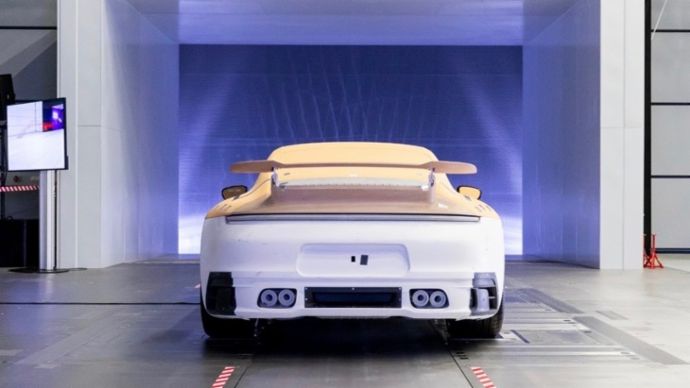



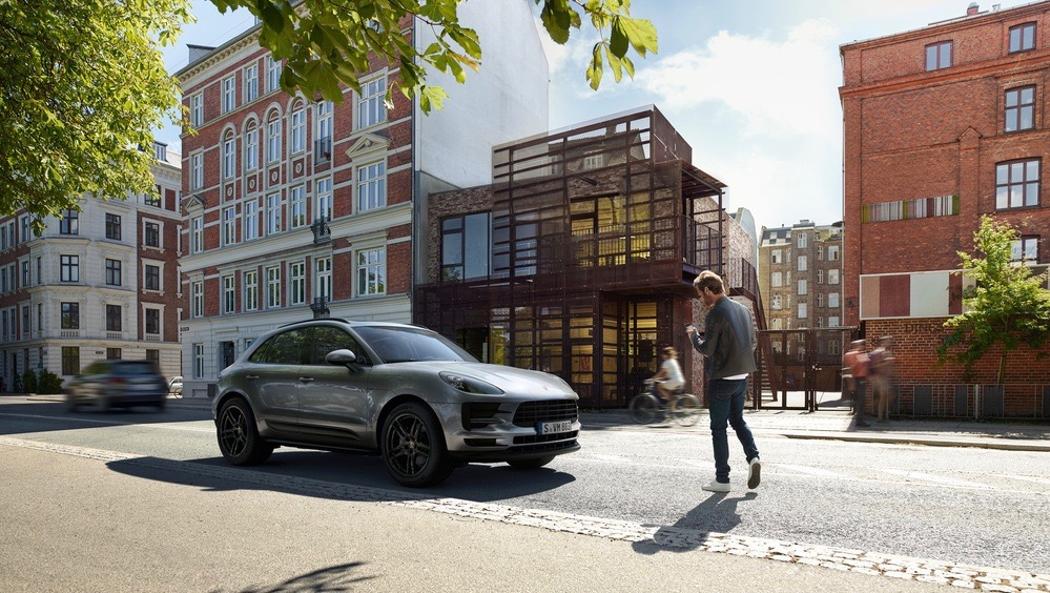
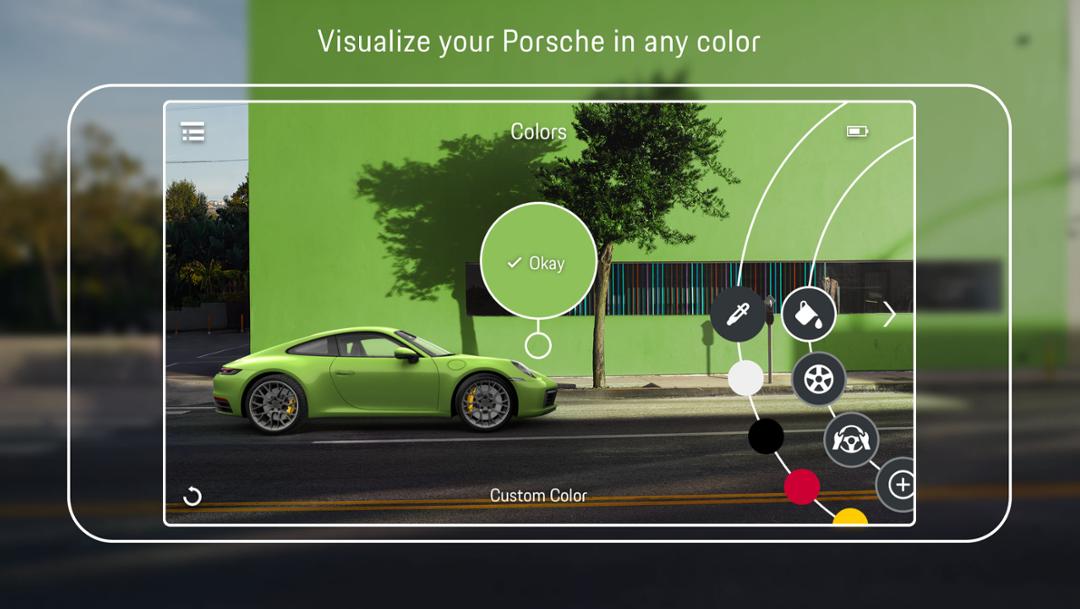
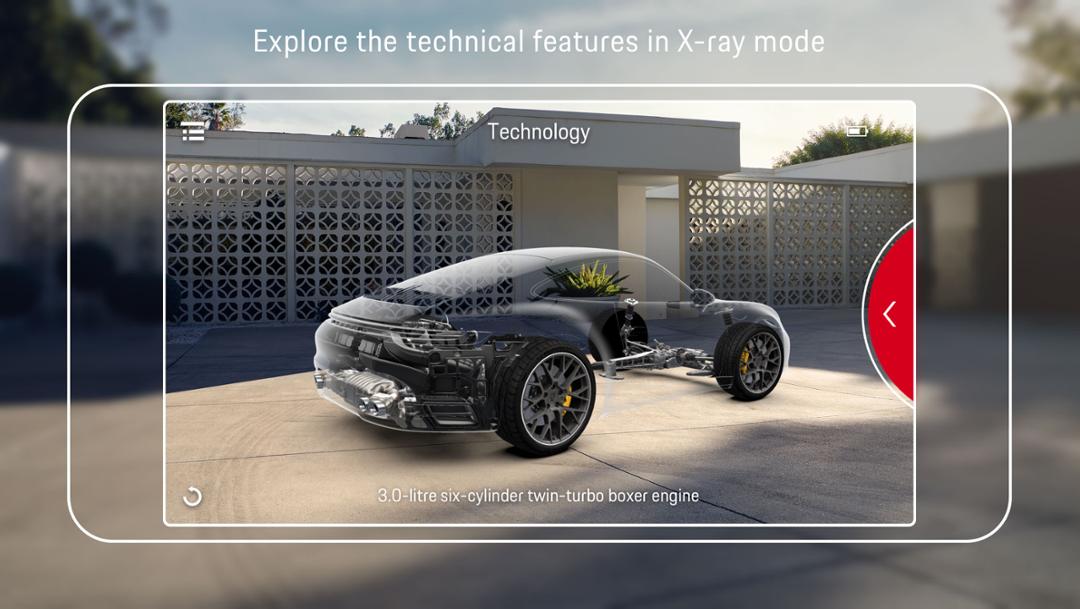



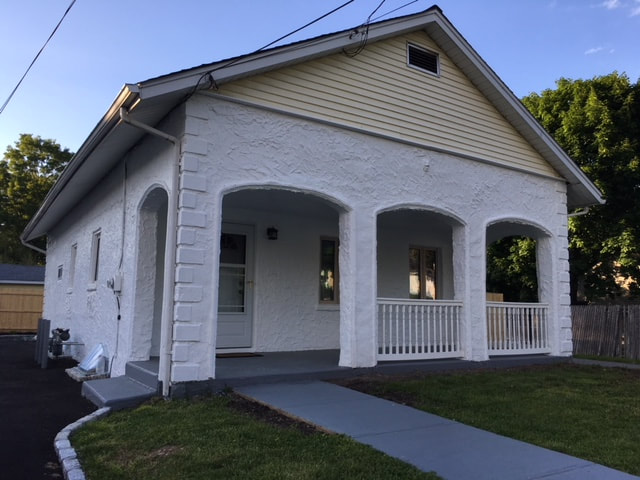

 RSS Feed
RSS Feed